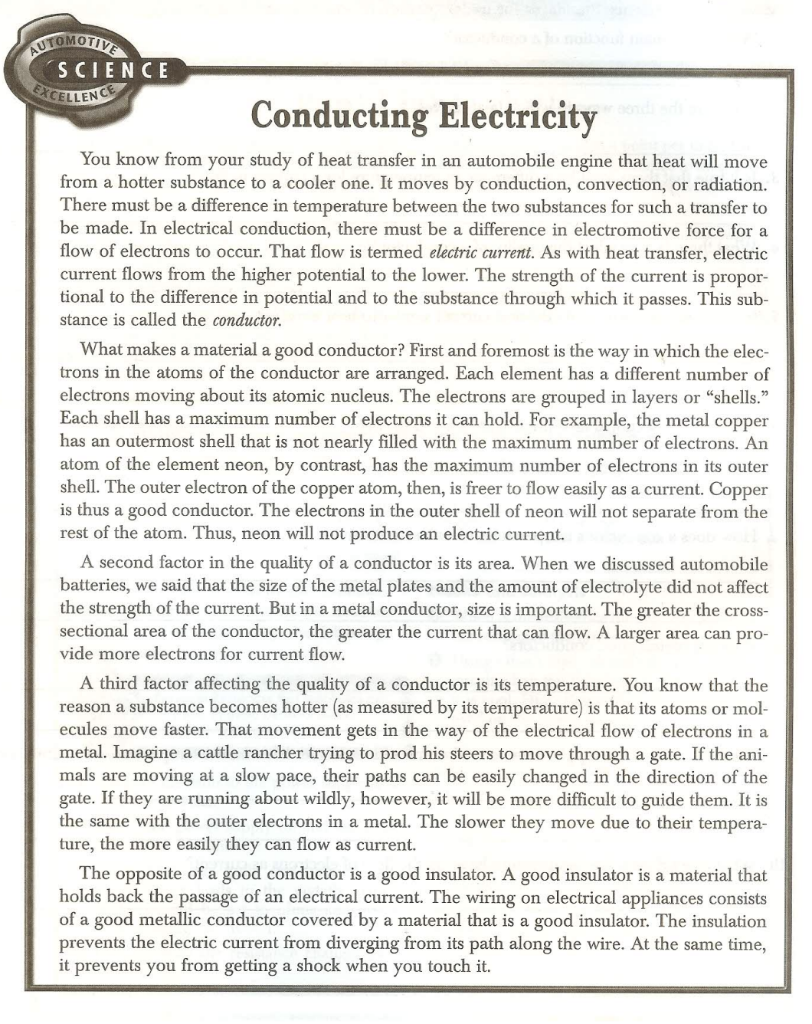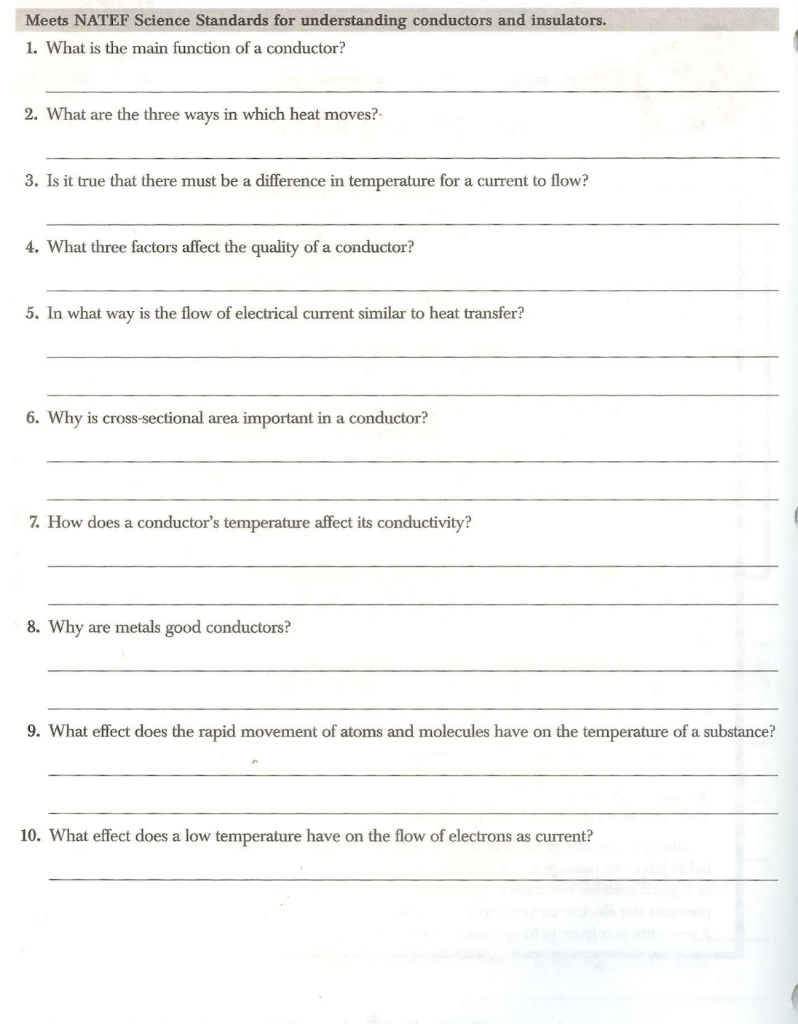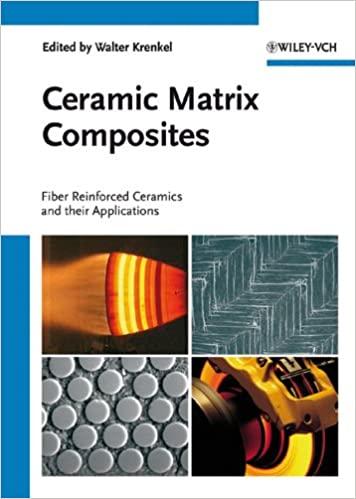

Conducting Electricity You know from your study of heat transfer in an automobile engine that heat will move from a hotter substance to a cooler one. It moves by conduction, convection, or radiation. There must be a difference in temperature between the two substances for such a transfer to be made. In electrical conduction, there must be a difference in electromotive force for a flow of electrons to occur. That flow is termed electric current. As with heat transfer, electric current flows from the higher potential to the lower. The strength of the current is proportional to the difference in potential and to the substance through which it passes. This substance is called the conductor. What makes a material a good conductor? First and foremost is the way in which the electrons in the atoms of the conductor are arranged. Each element has a different number of electrons moving about its atomic nucleus. The electrons are grouped in layers or "shells." Each shell has a maximum number of electrons it can hold. For example, the metal copper has an outermost shell that is not nearly filled with the maximum number of electrons. An atom of the element neon, by contrast, has the maximum number of electrons in its outer shell. The outer electron of the copper atom, then, is freer to flow easily as a current. Copper is thus a good conductor. The electrons in the outer shell of neon will not separate from the rest of the atom. Thus, neon will not produce an electric current. A second factor in the quality of a conductor is its area. When we discussed automobile batteries, we said that the size of the metal plates and the amount of electrolyte did not affect the strength of the current. But in a metal conductor, size is important. The greater the crosssectional area of the conductor, the greater the current that can flow. A larger area can provide more electrons for current flow. A third factor affecting the quality of a conductor is its temperature. You know that the reason a substance becomes hotter (as measured by its temperature) is that its atoms or molecules move faster. That movement gets in the way of the electrical flow of electrons in a metal. Imagine a cattle rancher trying to prod his steers to move through a gate. If the animals are moving at a slow pace, their paths can be easily changed in the direction of the gate. If they are running about wildly, however, it will be more difficult to guide them. It is the same with the outer electrons in a metal. The slower they move due to their temperature, the more easily they can flow as current. The opposite of a good conductor is a good insulator. A good insulator is a material that holds back the passage of an electrical current. The wiring on electrical appliances consists of a good metallic conductor covered by a material that is a good insulator. The insulation prevents the electric current from diverging from its path along the wire. At the same time, it prevents you from getting a shock when you touch it. 2. What are the three ways in which heat moves? 3. Is it true that there must be a difference in temperature for a current to flow? 4. What three factors affect the quality of a conductor? 5. In what way is the flow of electrical current similar to heat transfer? 6. Why is cross-sectional area important in a conductor? 7. How does a conductor's temperature affect its conductivity? 8. Why are metals good conductors? 9. What effect does the rapid movement of atoms and molecules have on the temperature of a substance? 10. What effect does a low temperature have on the flow of electrons as current








